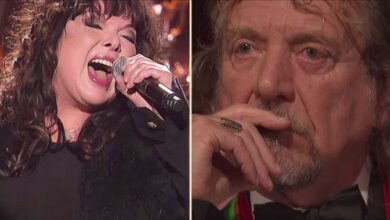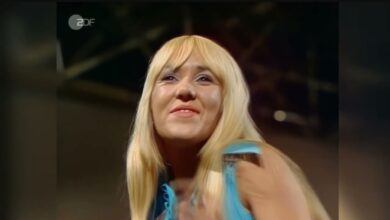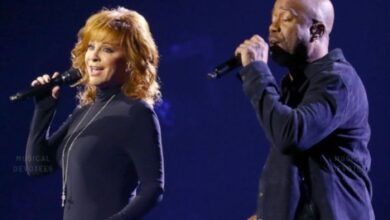Peter, Paul and Mary’s “Puff the Magic Dragon” Transcends Childhood and Folk Tradition in 1963
When “Puff the Magic Dragon” was released by Peter, Paul and Mary in early 1963, it arrived quietly—gentle in sound, wistful in tone—but quickly grew into one of the most beloved and debated folk songs of the era. With its lullaby-like melody and bittersweet tale of lost innocence, the song reached No. 2 on the Billboard Hot 100 and cemented the trio’s place as both chart-toppers and cultural figures. Though often categorized as a children’s song, “Puff the Magic Dragon” became far more than that: a tender reflection on the passing of childhood, a lightning rod for social commentary, and a lasting emblem of the 1960s folk revival’s emotional depth.
Peter, Paul and Mary—formed in 1961—were the product of a carefully curated collaboration by manager and folk impresario Albert Grossman. The group brought together three distinct talents: Peter Yarrow, a thoughtful and expressive songwriter; Noel “Paul” Stookey, whose warm tenor anchored the trio’s harmonies; and Mary Travers, whose striking voice and stage presence brought an emotional center to their performances. Unlike many folk groups who remained on the fringe of the commercial music world, Peter, Paul and Mary managed to bring the message and music of the folk scene into the mainstream.
The origin of “Puff the Magic Dragon” traces back to a poem written in 1959 by Leonard Lipton, a Cornell University student and friend of Peter Yarrow. Lipton had been inspired by Ogden Nash’s light verse and by themes of lost youth in literature. After typing the poem on Yarrow’s typewriter and walking away, Lipton left it behind—but Yarrow later found it and set it to music. With Lipton’s permission, he expanded and reshaped the poem into the song that would soon take on a life of its own. The resulting lyrics told the story of Puff, a noble dragon from the land of Honalee, and his human friend Jackie Paper, whose growing up brings their adventures to an end.
Recorded in 1962 and released in early 1963 on the Warner Bros. label, “Puff the Magic Dragon” was produced by Milt Okun, who helped define the trio’s clean, uncluttered folk sound. The recording featured their signature three-part harmonies, gentle acoustic guitar work, and a restrained arrangement that left space for the lyrics to shine. There were no grand flourishes or studio tricks—just sincerity and clarity. Mary Travers, often associated with protest anthems, let her voice soften in the background, allowing Yarrow to lead the song with quiet emotion and measured phrasing.
The song’s release in early 1963 was met with wide acclaim. It entered the Billboard Hot 100 in March and peaked at No. 2 in April, second only to the Beach Boys’ “Surfin’ U.S.A.” It also became a Top 10 hit on the Adult Contemporary chart and received extensive airplay on both pop and folk stations—a rarity at the time. Critics praised its gentle wisdom and emotional resonance, and parents embraced it as a soothing tune for children, unaware that it would also become a source of adult interpretation and controversy.
Almost immediately, rumors began circulating that the song was a coded reference to drug use—a theory that gained momentum in the late ’60s as marijuana culture became more visible. “Puff” was said to refer to smoking, “Jackie Paper” to rolling papers, and “Honalee” to a euphoric state of mind. Yarrow and Lipton repeatedly denied these claims, insisting the song was purely about the innocence of childhood and the inevitable process of growing up. Despite (or because of) these rumors, the song maintained a kind of double life: innocent on the surface, yet shadowed by the perceptions of the counterculture era.
For Peter, Paul and Mary, “Puff the Magic Dragon” became one of their most iconic songs, broadening their appeal beyond political folk audiences to families and classrooms. It helped them gain further mainstream traction at a time when protest songs were beginning to define their image. The track opened up new opportunities for the group, including appearances on national television, international tours, and greater creative control in the studio. It also reinforced their ability to tell emotionally resonant stories in a concise, approachable format.
The song’s influence on folk and pop music can’t be overstated. It helped validate storytelling as a legitimate and powerful tool in songwriting—something that would influence not only future folk artists like John Denver and Judy Collins, but also pop musicians who looked to narrative structure in their lyrics. Its structure—simple verses, consistent rhyme, and gentle melody—became a template for many children’s songs that followed, though few matched its emotional weight.
Over the years, “Puff the Magic Dragon” has been covered by dozens of artists, including Bing Crosby, The Irish Rovers, and more recently, folk artists such as Peter Hollens. Each version brings a slightly different tone—some leaning into the lullaby quality, others playing up the melancholy. In 1978, the song was adapted into an animated television special narrated by Burgess Meredith, which brought Puff to a new generation of children and further cemented the song’s place in American cultural memory.
The song’s release came during a turbulent time in U.S. history—just months before the assassination of President John F. Kennedy and as the civil rights movement gained national attention. While “Puff the Magic Dragon” did not address politics directly, its gentle sadness and sense of loss mirrored a nation on the cusp of profound change. It offered comfort and quiet reflection at a time when both were sorely needed.
Decades later, the song remains a staple of children’s music compilations, yet continues to be discussed by critics and fans for its deeper meanings. It has appeared in films, commercials, and books, and has been referenced in everything from The Simpsons to academic analyses of youth culture. Its longevity stems not only from its memorable melody but from its universal message: childhood is fleeting, imagination fades, and even the noblest dragons must eventually sleep.
Peter Yarrow has continued to perform the song at concerts and schools around the world, often introducing it with the story of its origin and its intended meaning. As one of the few 1960s folk songs to maintain a permanent presence across generations, “Puff the Magic Dragon” stands as a rare example of a pop hit that found enduring life in both nostalgia and renewal.
In the end, “Puff the Magic Dragon” is far more than a children’s song. It’s a gentle meditation on innocence, change, and memory—wrapped in the form of a dragon’s tale. For Peter, Paul and Mary, it was a career milestone. For listeners, it’s a bittersweet reminder of the moment when make-believe gives way to reality. And sixty years on, Puff still flies—if only in the quiet corners of our imagination.



